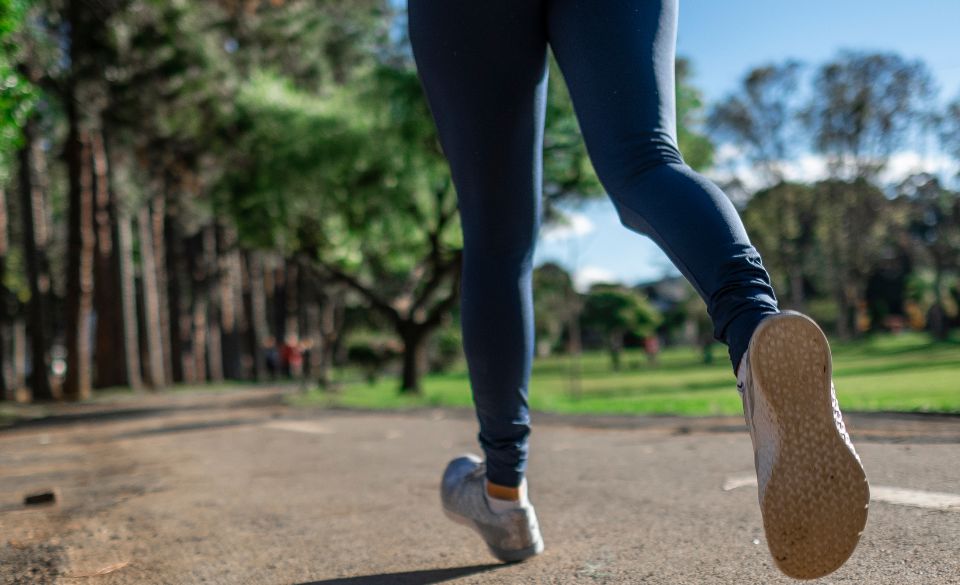
What Does a Runner’s High Feel Like?
Page Contents
If you’ve ever completed an extensive run and sensed the potential to go a few extra miles, you may have encountered the phenomenon known as a runner’s high.
This euphoric state not only induces relaxation and tranquility in athletes but also provides a temporary shield against the pain resulting from prolonged exercise.
However, not everyone engaging in running or intense exercise will undergo this fleeting moment of euphoria. Read on to understand the reasons behind the occurrence of a runner’s high, exploring the factors responsible for this sensation and why it might not be as easily attainable as one might anticipate.
What Constitutes a Runner’s High?
A runner’s high is a momentary, profoundly calming state of euphoria, characterized by an overwhelming sense of extreme joy or delight. Typically, this state follows strenuous or prolonged physical activity, with individuals often reporting reduced anxiety and pain immediately after their run.
Nevertheless, not everyone who engages in intensive running or exercise will necessarily experience a runner’s high. The subjective nature of the experience makes it challenging to quantify “euphoria,” but indications suggest that it might be a relatively rare occurrence.
Moreover, achieving the necessary distance for a runner’s high to manifest may require running for several miles consecutively, a challenge not easily surmountable for many individuals.
So, if after completing a lengthy jog you don’t feel inclined to restart your race, rest assured that you’re not alone. Nevertheless, commendations are in order for undertaking that healthy run.
The Physiological Response to Running
While a runner’s high is one potential benefit of running or exercise, various physical advantages stem from the release of chemicals during running, extending beyond the cardiovascular system.
Running and aerobic exercise trigger a surge of endorphins into the bloodstream. Endorphins, often dubbed “feel-good” chemicals, generate sensations of happiness and pleasure, concurrently alleviating pain during the activity, acting as a natural pain reliever and enhancing endurance.
Historically, scientists attributed a runner’s high to endorphins due to their myriad beneficial effects. However, recent research has shifted the spotlight to another class of molecules: endocannabinoids.
These molecules impact the endocannabinoid system, the same system influenced by THC, the active component in cannabis. Similar to endorphins, exercise releases endocannabinoids into the bloodstream, potentially accounting for the euphoric and deeply relaxed feelings post-run.
Understanding Endorphins and Endocannabinoids
Endorphins, large neurochemicals produced by the central nervous system and pituitary gland, act on the brain similarly to opioids like morphine. Although they are associated with feelings of happiness and pleasure, their size prevents them from crossing the blood-brain barrier, challenging the notion that endorphins are solely responsible for a runner’s high.
On the other hand, endocannabinoids, smaller molecules capable of traversing the blood-brain barrier, interact with receptors in the endocannabinoid system. Anandamide, a type of endocannabinoid found at elevated levels in the blood post-run, is speculated to trigger a runner’s high, leading to short-term psychoactive effects such as reduced anxiety, euphoria, and a sense of calm.
However, research on how the brain and body respond to endocannabinoids after exercise is limited, with significant studies conducted primarily on mice. Human-based research in this area is ongoing.
Additional Running Benefits
While a runner’s high isn’t guaranteed for everyone, numerous other benefits make running a worthwhile endeavor. These include reduced anxiety and feelings of depression, enhanced memory and focus, increased flexibility and improved mobility, a strengthened immune system, improved insulin response, and the potential for weight loss or maintenance.
Frequently Asked Questions (FAQ)
How do you know if you have a runner’s high?
Recognizing a runner’s high is subjective and varies from person to person. Common signs include a sense of euphoria, extreme joy, or delight after an intense or lengthy exercise session, particularly running. Individuals may also report feeling relaxed, calm, and less anxious. The experience is often accompanied by a temporary shield against pain from the exercise.
How would you describe a runner’s high?
A runner’s high is described as a brief, deeply relaxing state of euphoria. It is characterized by intense joy and delight that occurs after engaging in strenuous or prolonged physical activity, such as running. People who experience a runner’s high often report feelings of extreme happiness, reduced anxiety, and a sense of calm. It is a subjective and individualized sensation that may include a temporary reprieve from the discomfort associated with extended exercise.
How do you trigger a runner’s high?
Triggering a runner’s high is not guaranteed for everyone, and the exact mechanism is not fully understood. It often requires engaging in intense or lengthy aerobic exercise, such as running. The distance covered during the run may also play a role, with some suggesting that running several miles consecutively may increase the likelihood of experiencing a runner’s high. However, the occurrence is highly individual, and factors like fitness level, mental state, and overall health may contribute.
How many minutes is a runner’s high?
The duration of a runner’s high is typically described as short-lasting. There is no specific timeframe universally agreed upon, as the experience varies among individuals. The feelings of euphoria, reduced anxiety, and calmness may be most pronounced immediately after the intense exercise and gradually diminish. The duration can be influenced by factors such as the individual’s fitness level, the intensity and duration of the exercise, and overall health.
Final Words – What Does a Runner’s High Feel Like?
In the pursuit of understanding the elusive phenomenon of a runner’s high, we’ve delved into the realms of euphoria, exploring the intricate interplay of endorphins and endocannabinoids in the aftermath of intensive running. The subjective nature of this experience, marked by extreme joy and tranquility, paints a vivid picture of the post-run elation that many athletes cherish.
While not everyone embarking on a running journey may encounter this fleeting euphoria, the benefits extend beyond the elusive runner’s high. From the surge of feel-good endorphins to the potential influence of endocannabinoids, running contributes to reduced anxiety, enhanced mood, and improved overall well-being.
As we navigate the complexities of the physiological response to running, it becomes clear that the pursuit of a runner’s high is a highly individualized journey. Factors such as fitness levels, mental states, and the intensity of the exercise all play a role in shaping this unique experience.
In the realm of frequently asked questions, we’ve explored the signs of a runner’s high, its description as a deeply relaxing state of euphoria, the uncertain triggers, and the brief duration that characterizes this post-run bliss. The intricacies of these inquiries highlight the fascinating and still-evolving understanding of the intersection between physical activity and the euphoric sensations that follow.
In closing, whether you find yourself on the quest for a runner’s high or reveling in the myriad other benefits of running, the journey itself remains a commendable pursuit of health and well-being. Lace up those running shoes, hit the pavement, and embrace the joy that each stride brings, whether it leads to the elusive runner’s high or a host of other positive outcomes.


